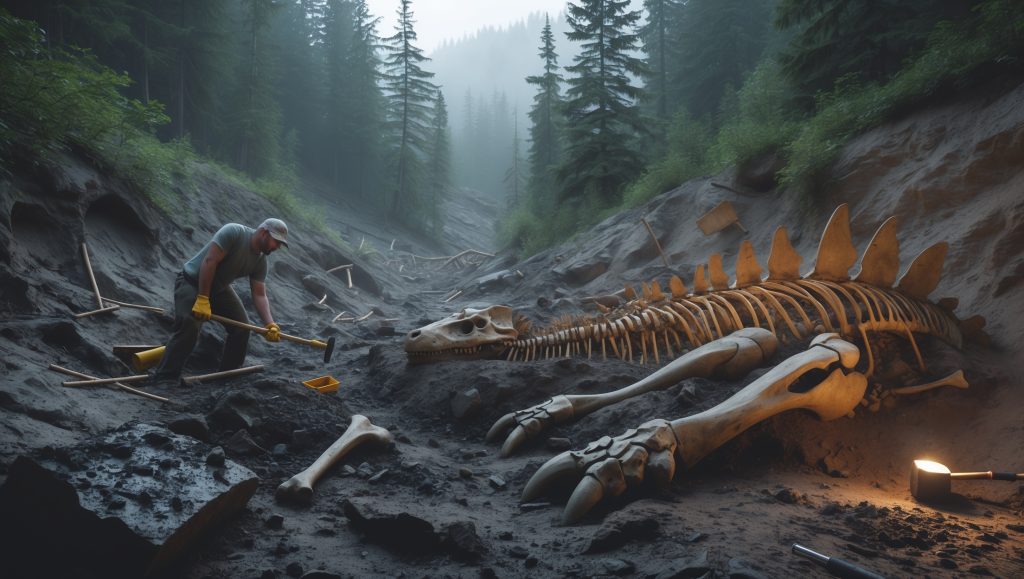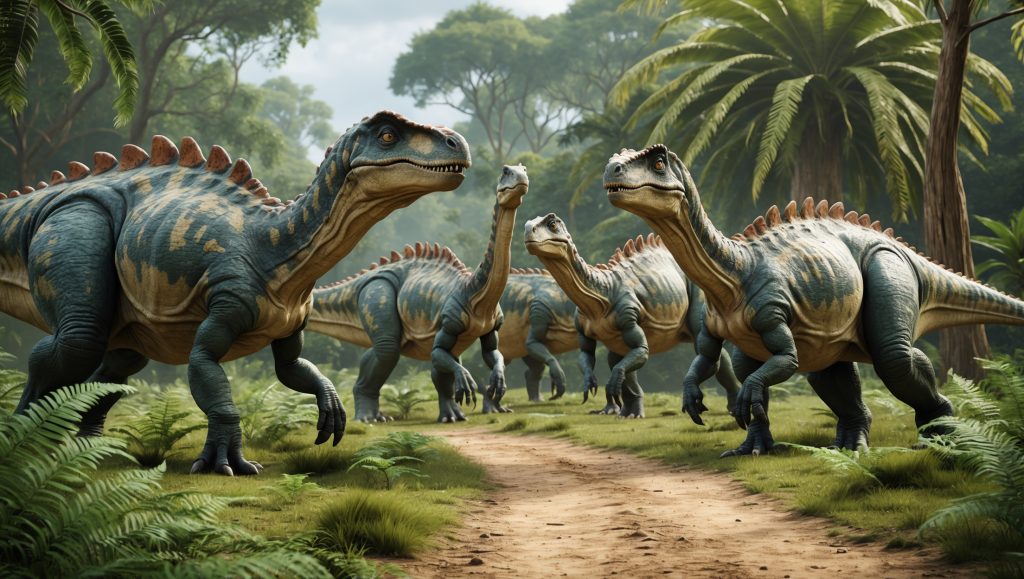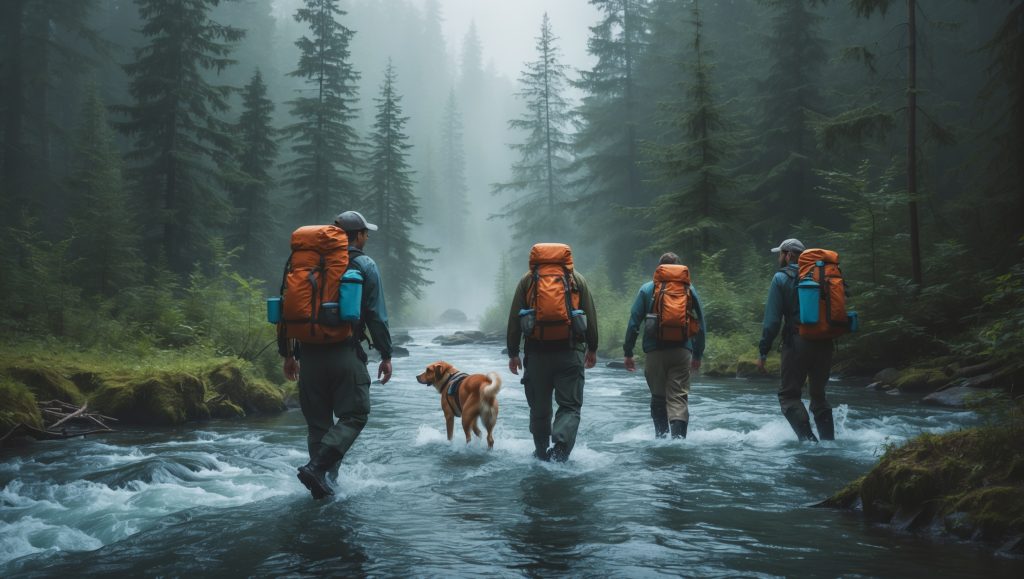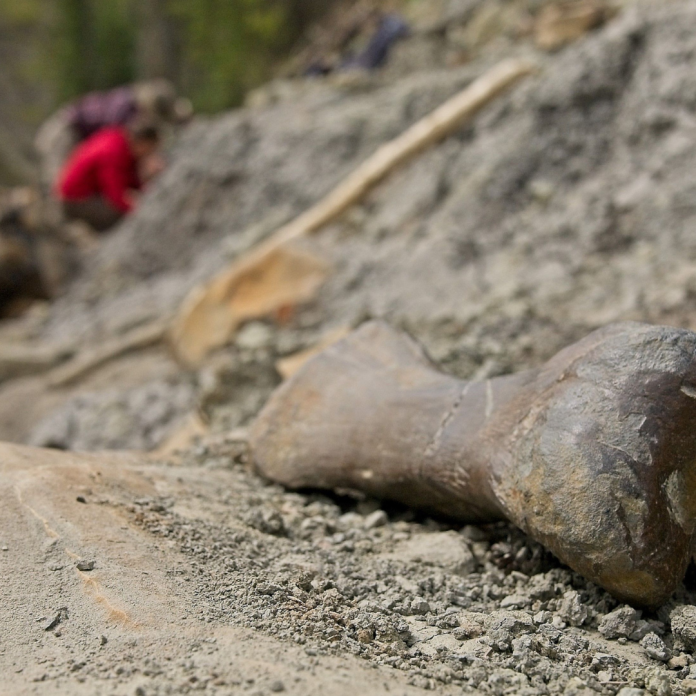Beneath the forested slopes of Alberta, Canada, lies one of the world’s largest dinosaur mass graves—a prehistoric puzzle buried for 72 million years.
Thousands of fossilized remains have been unearthed at Pipestone Creek, a site so densely packed with bones it’s been dubbed the “River of Death.” Now, a team of palaeontologists is digging into this ancient mystery, determined to discover what wiped out an entire herd of dinosaurs in a single, catastrophic event.
Digging for Answers

The investigation begins with a sledgehammer smashing through layers of rock. This brute-force approach reveals what Professor Emily Bamforth calls “palaeo gold”: a tangle of bones buried under centuries of sediment.
As her team carefully brushes away dust and debris, fossils emerge—hip bones, ribs, toe fragments, and puzzling pieces yet to be identified. Her dog, Aster, watches from the sidelines, trained to alert the team to the presence of bears.
“This one here, we have no idea what it is—it’s a great example of a Pipestone Creek mystery,” says Bamforth, pointing to an unidentifiable bone.
BBC News visited the site to witness the scale of this prehistoric graveyard and document the efforts to reconstruct the lives—and deaths—of its ancient inhabitants.
A Sea of Fossils
So far, thousands of fossils have been recovered from the site, all belonging to the Pachyrhinosaurus—a stocky, horned herbivore related to the Triceratops. These five-meter-long, two-ton dinosaurs lived during the Late Cretaceous period and were distinguished by a prominent bony lump, or “boss,” on their noses.
The excavation site is incredibly dense. Bamforth estimates there are as many as 300 bones per square meter, with the bone bed stretching more than a kilometer into the hillside. So far, only an area the size of a tennis court has been excavated.
“This is one of the largest bone beds in North America,” says Bamforth. “Most dinosaur species are known from just one specimen. We have thousands of Pachyrhinosaurus here.”
Researchers believe these animals were migrating in a massive herd, journeying from their southern wintering grounds to northern feeding areas rich in vegetation—a seasonal trek that ended in disaster.
A Prehistoric Ecosystem

Pachyrhinosaurus wasn’t the only dinosaur to roam this region. Just a two-hour drive away, in the remote Deadfall Hills, even larger fossils lie exposed along riverbanks, no digging required.
Palaeontologist Jackson Sweder points out a massive vertebra and fragments of ribs and teeth. He’s particularly interested in a chunk of skull he believes belongs to an Edmontosaurus, a duck-billed herbivore that could grow up to 10 meters long.
Sweder works at the Philip J. Currie Dinosaur Museum, where the fossils are taken for cleaning and study. There, he’s examining a 1.5-meter-long Pachyrhinosaurus skull dubbed “Big Sam.” The skull’s central horn is mysteriously missing—an unusual trait that may offer insights into individual variation within the species.
With over 8,000 bones collected so far, the museum holds specimens ranging from juveniles to fully grown adults. This diversity allows scientists to explore growth patterns, community dynamics, and unique characteristics within the herd.
Death by Disaster
The biggest question remains: what killed them?
“We believe this herd was caught in a catastrophic event during migration,” Bamforth explains. “A flash flood, likely caused by a sudden storm in the mountains, may have sent a wall of water crashing down the valley.”
Too large and slow-moving to escape, and poor swimmers to begin with, the Pachyrhinosaurus stood little chance. Geological evidence at the site supports this theory—swirling sediment patterns in the rock indicate fast-moving floodwaters that buried everything in their path.
“It’s like a moment frozen in stone,” says Bamforth.
A Treasure Trove for Science

For palaeontologists, the tragedy that wiped out this ancient herd is an extraordinary opportunity. Every visit to Pipestone Creek yields new discoveries.
“We know every time we come here, we’ll find bones,” Bamforth says. “And every year, we learn something new about this species.”
As the team wraps up another day of digging, they’re well aware that they’ve only begun to uncover what lies beneath. The “River of Death” still holds many secrets—waiting, patiently, to be revealed.
By BBC


